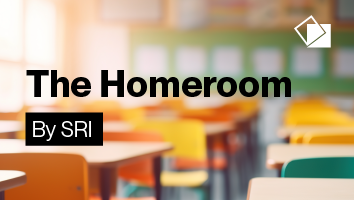My research focus, autism, affects people and their ability to function in different ways across the spectrum. For those who have mild-to-moderate autism and are considered “high functioning,” many do incredibly well intellectually, but still often fare poorly at life. We see these people not going to college and not living independently at the rates you would expect they could.

In fact, the vast majority of students with autism do not go to college, and actually have one of the lowest college enrollment rates across all disability categories and the general population.
With my background in behavior and mental health, I am interested in how to help solve this problem.
Around five years ago, I got together with fellow SRI Education researchers, Jose Blackorby, Mary Wagner, and Xin Wei, to see if we couldn’t use an amazing SRI resource to answer some questions about autism. That resource, the National Longitudinal Transition Study-2 (NLTS2), conducted by SRI for the U.S. Department of Education, collected data from more than 11,000 high school students receiving special education services. Approximately 1,100 of these students received special education services in the autism category.
In the last four years, with grant-funded support from the National Science Foundation and the Department of Education’s Institute of Education Sciences, SRI Education colleagues and I have completed 12 studies focused on education-based supports and services to support transition-age youth and young adults with autism.
Our first major finding, which led us to many other questions, was that 34 percent of people who have autism and attend college end up being Science, Technology, Engineering or Math (STEM) majors, which is significantly higher than any other disability group and much higher than the general population, which is closer to about 20 percent.
We then considered the ways that high school students with autism could get into and succeed in college. Among other things, we found that giving these students some ownership of their high school individualized education plans (IEP) – for instance, being actively involved in the IEP process and indicating a desire to go to college as one of their transition goals – were instrumental in getting them into college.
When it comes to actually completing college and getting their degree, one of our most important findings is that two-year colleges are more effective for students with autism than four-year colleges, especially for those who are majoring in STEM fields. Not only are they more likely to complete their associate’s degree in community college, but those who start out with community college are also more likely to transfer to a four-year college.
Some of our recent research has focused on how young adults transition into the workforce. A lot of autism research hasn’t addressed this topic yet, at least not with the magnitude of data that we are looking at. We have started looking at job prospects for college graduates with autism, and we have found a good news/bad news situation.
The bleak aspect is that we have found, as suspected, that young adults with autism aren’t doing so well even if they graduate from college. They have the greatest difficulty of any disability group to get employment and to stay employed.
However, the good news is that people with autism who are able to reach out and receive support from others – vocational rehabilitation services, family members, or potential employers – seem to do much better at getting jobs, receiving workplace accommodations at jobs and exhibiting pretty high rates of job satisfaction.
At the same time that we have been uncovering all this new insight into how people with autism fare as they transition from childhood to adulthood, I am always thinking: “It is great that we are making all these discoveries, but I wonder if there is anything we can do as developers to actually provide support for individuals with autism and their families and caregivers?”
It is really exciting to think that our research at SRI could be turned into tools to meet the needs of people with autism, whether for school, career or daily living.
As researchers, we have the opportunity to support learning for people with autism, recognizing that for a lot of them, learning isn’t about intellectually understanding the material, it’s more about how to self-regulate, for example, if they are frustrated. We are thinking about ways to develop technology to address how large a role emotion plays a part in learning for people with autism. What are the things we can create that could recognize inappropriate behavior—such as decreasing levels of engagement, boredom, confusion and frustration—and give them real time support, such as self-regulation tips to breathe, take a step back, work on another problem? These are some of the responses we may take for granted, but could really help those with autism to think more clearly and move forward with their learning.
The work that we do has applications that go beyond autism as well, but for now I feel excited and confident that we have the potential to impact the landscape for people with autism.
Some materials for this publication are based upon work supported by the National Science Foundation under Grant No. 1130088 and the U.S. Department of Education’s Institute of Education Sciences, award number R305A1200012. The views expressed herein do not necessarily represent the views, positions or polices of the National Science Foundation or the U.S. Department of Education.


